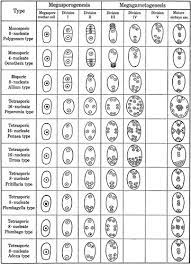ASEXUAL PROPAGATION (VEGETATIVE PROPAGATION)
VEGETATIVE PROPAGATION
DEFINITION:
Asexual propagation or vegetative propagation or clonal propagation refers to the multiplication or perpetuation of any plant from any vegetative parts of plants other than the seeds. Vegetative propagation is possible as the vegetative organs of many plants have the capacity for regeneration. For instance, stem cutting have the ability to form adventitious roots; root cuttings can generate new shoot system while leaves can regenerate new roots and shoots. Vegetative propagation is also known as clonal propagation since this kind of propagation is the rule to maintain a clone.
CLONE:
A clone may be defined as genetically uniform materials derived from single individual and propagated. exclusively by vegetative means such as cutting, divisions or grafts.
METHODS OF
VEGETATIVE PROPAGATION:
Cuttage:
Cuttage may be described as a method of propagation of plants by the detached vegetative plant parts which when placed under conditions favourable for rejuvenation will develop into a complete plant similar in all characteristics to the parent from which it was taken. A cutting may be defined as any vegetative plant part, when detached from the parent, is capable of regenerating the missing organ or organs. According to a plant part from which a cutting is prepared, they can be classified as root cutting, stem cutting, leaf cutting, leaf bud cutting.
Layering:
In this method, the stem of a parent
plant is allowed to develop roots while still intact. When the root develops,
the rooted part is cut and planted to grow as a new plant. E.g.; Ixora and Jasminum.
Simple layering:
It consists of bending down a shoot and burying. Part of it in the soil so that the tip is above the ground level: the buried portion is sometimes wounded by a single stoke upwards on the upside of the shoot to be buried. The layered branches are held firmly in position by pegs or large stones. Roots are formed at the buried portion where the cut is made. Low flexible branches of the plants can be bent to the ground e.g.; Rose, Jasmine, Guava. Sometimes a single tongue-like cut is made in the shoots on the underside towards the growing point. At the cut portion, a pebble is placed to avoid fusion of tissues. This is completely covered with soil. After two months in the cut portion roots will develop.
Air
layering:
In this method the stem is girdled at nodal region and hormones are applied to this region which promotes rooting. This portion is covered with damp or moist soil using a polythene sheet. Roots emerge in these branches after 2-4months. Such branches are removed from the parent plant and grown in a separate pot or ground.
Grafting:
In this, parts of two different plants
are joined together to continue to grow as one plant. Of the two plants, the
plant which is in contact with soil is called stock and the plant used for
grafting is called scion. e.g.; citrus, mango, apple
Tongue grafting:
This is simple and extensively employed in apples and pears. The scion shoot is given a slanting cut of 7.5 to 9.0 cm long at the basal end. A corresponding cut is made on the rootstock. The cut surfaces are placed together and secured tightly in position by tying or sometimes sealed with grafting wax. A tongue -shaped cut is often given both in the cut surface of scion and rootstock which helps in holding the stock and scion more intimately together. This method is known as whip or splice grafting e.g.; apples and pears. It heals quickly and makes a strong union because of close contact between the cambial regions.
Budding:
Budding is the art of inserting
a bud on the rootstock plant in such a manner that both will unite and continue
to grow as a single individual plant.
Shield budding
or ‘T’ budding:
In this method a ‘T’ or inverted ’T’ shaped incision is made on the rootstock stem. A transverse cut of 1.0 to 1.5cm length is made first and then either below or above to this a vertical cut of 2.5cm to 3.0 cm length is made and connected to the transverse cut. Then the bark is lifted by using the ivory edge of the budding knife. The scion bud is removed in the form of a shield with or without a piece of wood. The bark is raised and then the bud is inserted into the ‘T’ cut surface of the rootstocks. Then it is secured in position by proper bandaging. This method of budding is practiced extensively in the propagation of sweet oranges, roses, plums and peaches.
Introduction to horticulture 8th edition author N.Kumar










Comments